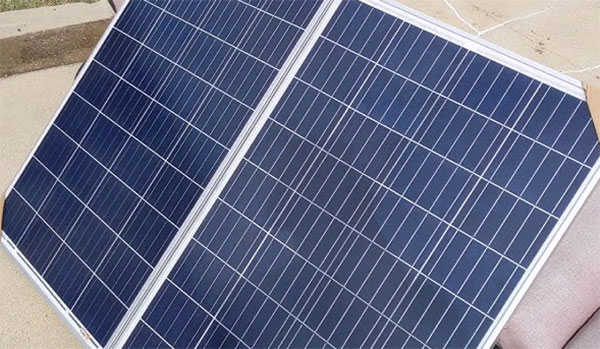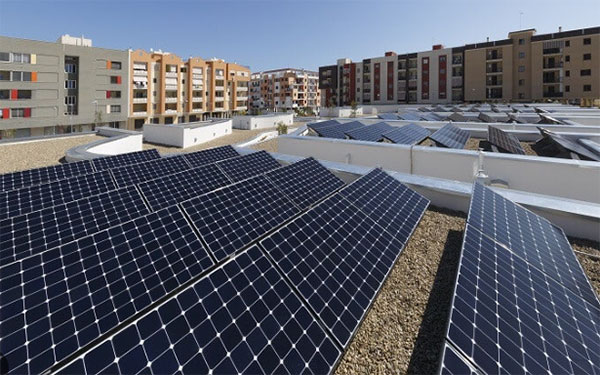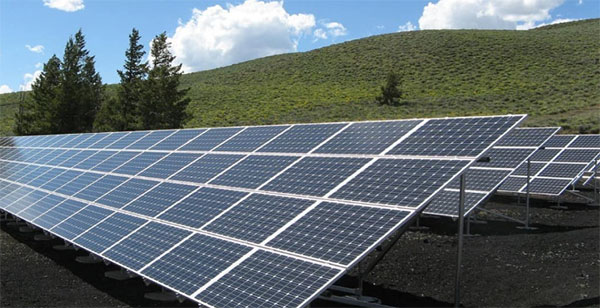Description
Yes, solar panel optimisers are worth it for increasing efficiency, reducing costs over time, and enhancing overall energy output in varied conditions.
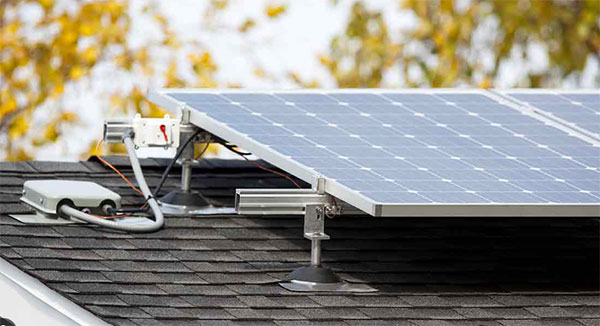
Solar Panel Optimisers
What Are Solar Panel Optimisers?
Solar panel optimisers, key components in modern solar energy systems, enhance the performance of solar panels. They act as an intermediate device between the solar panels and the inverter, allowing each panel to operate at its maximum potential. This technology stands out for its ability to manage the output of individual panels, which is particularly beneficial in scenarios where panels experience different levels of sunlight due to shading or orientation differences.
How Do Solar Panel Optimisers Work?
Solar panel optimisers employ Maximum Power Point Tracking (MPPT) to ensure each solar panel operates at its optimal power point. By adjusting the current and voltage from each panel, they counteract the effects of shading, dirt, or orientation mismatches. This process leads to a significant increase in energy yield, especially in partially shaded conditions. The optimisers communicate performance data to a central inverter, enabling real-time monitoring and management of each panel's output.
Comparison with Traditional Solar Panels
Unlike traditional solar panels that are connected in a series and operate as a single unit, systems with solar panel optimisers allow each panel to function independently. This independence dramatically reduces the impact of shading or panel degradation on the overall system performance. For instance, if one panel is shaded or underperforming, it doesn’t drag down the performance of the entire array. This setup ensures a higher overall efficiency, which can be quantified in terms of power output and energy yield. Systems with optimisers often exhibit a 5-25% increase in efficiency compared to traditional systems.
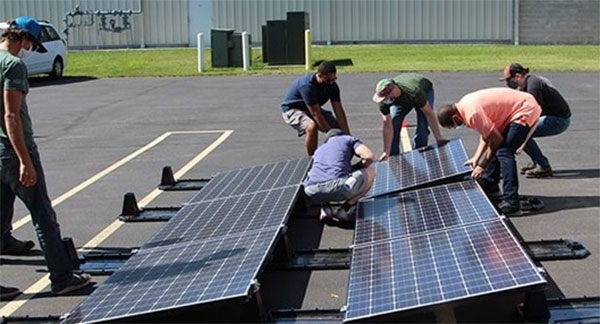
Evaluating the Efficiency of Solar Panel Optimisers
Impact on Solar Panel Performance
Solar panel optimisers significantly enhance the performance of solar panels by addressing individual panel inefficiencies. This impact is evident in several key areas:
- Increased Power Output: Optimisers can improve power output by up to 25%, depending on the specific conditions of the installation.
- Enhanced Efficiency in Shaded Conditions: They mitigate the effects of shading, leading to a more consistent and higher energy yield.
- Flexibility in Panel Orientation: Allows for more flexible installation, as panels don’t need to be installed in the same orientation or angle.
Key Metrics:
- Average Efficiency Increase: 5-25%
- Power Output Range with Optimisers: 250-350 Watts per panel
Optimisers in Various Climatic Conditions
The performance of solar panel optimisers varies across different climatic conditions:
- Hot Climates: Optimisers reduce the negative impact of high temperatures on solar panel performance, ensuring steadier energy production.
- Cold Climates: In colder regions, they help in maintaining optimal performance, especially when panels are prone to snow coverage or low sunlight conditions.
- Variable Weather: In areas with fluctuating weather conditions, optimisers adapt to changes, maintaining optimal output.
Climatic Impact Analysis:
- Performance Gain in Hot Climates: Up to 15%
- Efficiency Improvement in Cold Climates: Up to 10%
Long-term Performance Analysis
- Durability and Lifespan: The lifespan of solar panels with optimisers can extend beyond 25 years.
- Maintenance Costs: Reduced maintenance costs due to improved panel efficiency and less wear and tear.
- Return on Investment (ROI): Higher ROI due to increased energy production and lower maintenance costs.
Long-term Benefits:
- Extended Panel Lifespan: 25+ years
- Average Maintenance Cost Reduction: 20-30%
- ROI Improvement: 10-20%
Incorporating solar panel optimisers into solar systems presents a compelling case for increased efficiency and long-term benefits. Their ability to adapt to different environmental conditions and enhance overall system performance makes them an essential component in modern solar installations.
| Aspect |
Benefit |
Detail |
| Power Output |
Increased by up to 25% |
250-350 Watts/panel |
| Efficiency in Shading |
Consistent energy yield |
5-25% Efficiency Gain |
| Climatic Adaptability |
Performance in all climates |
10-15% Gain in Extreme Climates |
| Lifespan |
Extended beyond 25 years |
Reduced Wear and Tear |
| Maintenance Costs |
Reduced by 20-30% |
Less Frequent Servicing Needed |
| Return on Investment |
Improved by 10-20% |
Higher Energy Production |

Cost-Benefit Analysis of Solar Panel Optimisers
Initial Investment vs. Long-Term Savings
The cost-benefit analysis of solar panel optimisers begins with understanding the initial investment compared to long-term savings.
- Initial Costs: The installation of solar panel optimisers involves additional expenses over standard solar panel setups. The average cost per optimiser ranges between $50 to $150.
- Energy Savings: Optimisers improve efficiency, leading to significant energy savings. This efficiency can translate to a 5-25% reduction in energy bills.
- Long-term Financial Benefits: The increased efficiency results in long-term financial gains, offsetting the initial investment over time.
Key Financial Aspects:
- Average Initial Cost Increase: 10-20% over standard setups
- Long-Term Energy Bill Savings: 5-25%
Analysis of Payback Period
The payback period is a critical factor in evaluating the cost-effectiveness of solar panel optimisers.
- Shortened Payback Period: The increased efficiency leads to faster energy savings, shortening the payback period.
- Factors Influencing Payback: Energy costs, geographic location, and the amount of sunlight directly affect the payback period.
Payback Period Insights:
- Typical Payback Period: 4-8 years, depending on the region
- Key Influencing Factors: Local energy prices, solar irradiance levels
Financial Incentives and Subsidies
Financial incentives and subsidies play a vital role in reducing the overall cost of solar panel optimiser installations.
- Government Subsidies: Many governments offer subsidies or tax incentives for solar energy installations, which can significantly reduce the upfront cost.
- Renewable Energy Certificates (RECs): Owners can earn RECs, which can be sold or traded, providing additional financial benefits.
Incentives Overview:
- Potential Subsidy Amounts: Up to 30% of installation costs in some regions
- RECs and Additional Benefits: Varies by region and energy production
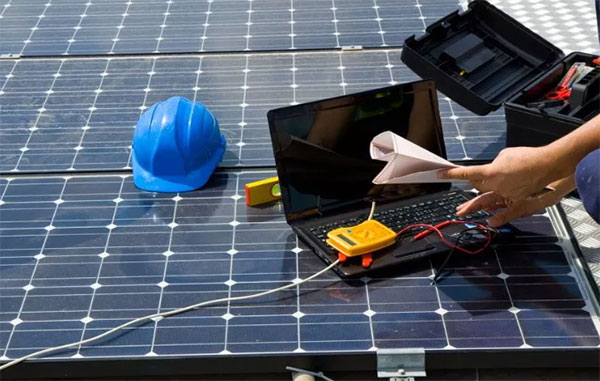
Installation and Maintenance of Solar Panel Optimisers
Installation Process for Solar Panel Optimisers
Installing solar panel optimisers is a critical step in setting up an efficient solar power system.
- Selection of Compatible Panels: Ensure the solar panels are compatible with the optimisers.
- Mounting the Optimisers: Optimisers are typically mounted on the back of each solar panel.
- Wiring: Connect the optimisers to each solar panel and then to the inverter.
- System Integration: Finally, integrate the entire system with the power grid and monitoring software.
Key Installation Points:
- Compatibility Check: Match optimisers with appropriate solar panels.
- Professional Installation: Recommended for optimal performance and safety.
Maintenance Requirements and Tips
Solar panel optimisers require minimal maintenance, but regular checks are essential.
- Visual Inspections: Regularly check for physical damage or debris accumulation.
- Performance Monitoring: Use monitoring software to track each panel's performance.
- Cleaning Panels: Keep solar panels clean to ensure optimal functioning.
Maintenance Tips:
- Schedule Annual Professional Checks: To ensure system integrity and efficiency.
- Regular Software Updates: Keep the system's software up to date for enhanced performance and security.
Common Issues and Troubleshooting
While solar panel optimisers are generally reliable, some common issues can arise.
- Underperformance: If a panel is underperforming, check for shading or physical obstructions.
- Optimiser Failures: In rare cases, an optimiser might fail, requiring replacement.
- Communication Issues: Ensure all wiring is secure and intact if there are communication problems between the optimiser and inverter.
Troubleshooting Steps:
- Inspect for Physical Damage: Look for visible signs of damage or wear.
- Check Connections: Ensure all wiring connections are secure.
- Consult Technical Support: For persistent issues, contact the manufacturer's support team.
Environmental Impact and Sustainability of Solar Panel Optimisers
Reduction in Carbon Footprint
Solar panel optimisers play a significant role in reducing the carbon footprint of solar energy systems. By maximizing the efficiency of solar panels, they contribute to increased energy production from a renewable source, thus reducing reliance on fossil fuels. This shift is crucial in mitigating climate change.
The use of solar panel optimisers leads to a more efficient solar energy system, which translates to higher energy output for the same amount of sunlight. This efficiency reduces the need for electricity generated from non-renewable sources, subsequently lowering greenhouse gas emissions. A solar system with optimisers can reduce carbon emissions by up to 25% more than traditional solar systems without optimisers.
Contribution to Renewable Energy Goals
Incorporating solar panel optimisers into solar energy systems is a significant step towards achieving renewable energy goals set by various countries and organizations. Optimisers ensure that each solar panel operates at its maximum potential, contributing to a more substantial overall yield of renewable energy.
The increased efficiency provided by solar panel optimisers means that fewer solar panels are required to meet specific energy targets, leading to more efficient use of space and resources. This efficiency is crucial for densely populated urban areas where space is limited.
Lifecycle Analysis of Solar Panel Optimisers
A comprehensive lifecycle analysis of solar panel optimisers reveals their sustainability and environmental benefits over their operational lifespan.
Solar panel optimisers are designed to last as long as the solar panels themselves, typically around 25 years. This longevity ensures that the environmental impact of manufacturing and disposing of optimisers is spread over a long period, thus minimizing their environmental footprint. Additionally, the materials used in solar panel optimisers are often recyclable, further reducing their environmental impact at the end of their life cycle.





